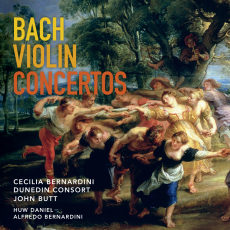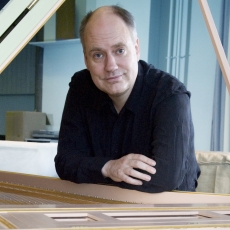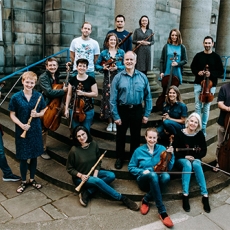Dunedin Consort - J.S. Bach: Violin Concertos - Audio Video Club of Atlanta
In one of the most beautiful-sounding releases Linn has ever given us (and that's saying a lot) John Butt directs the Dunedin Consort in accounts of the violin concertos of J.S. Bach that crave your attention even in a field that has been gleamed many times before. Relaxed motion, a nice feeling of swing, and the really beautiful sound of the baroque instruments played by the soloists, all contribute to the overall impression of charm allied with sensual beauty.
Besides Butt's sure-handed direction, I am also indebted to him as booklet annotator. The influence of Vivaldi's epoch-making L'Estro Armonico, particularly in his use of ritornello, had never made the impression on me it does here. The purpose of this characteristic Vivaldi device really struck me for the first time in But's analogy from the art of rhetoric, where 'an idea is fully seeded in the opening utterance, which is brought back at regular intervals in slightly different ways, so as to deepen the implications of the main idea and also to generate a sense of overall coherence.' Bach does this supremely well, as the present performances bear out.
The program starts with the Concerto in C minor for Oboe and Vioiln, BWV 1060R, in which Cecilia Bernardini makes beautiful music with her oboist father Alfredo in the gorgeous Adagio movement, which has always struck me as comparable to the exalted lyricism of the famous Largo in Bach's Harpsichord Concerto in F minor, BWV 1056. It is matched by the long lyrical lines of the Adagio in Violin Concerto in E major, BWV 1042, which ends in a rondo finale in the style of a joyous peasant dance. In the middle of the program we have the Sinfonia to Cantata BWV 21, of which the most memorable feature is the languid oboe melody whose poignancy is the perfect correlative for the cantata's text, 'Ich hatte viel bekümmernis' (I had much sorrow).
The Violin Concerto in A minor, BWV 1041 follows next. In the Andante, Bach uses an ostinato pattern in the bass to focus the harmonic relation-ships. Then he really cuts loose in the finale, whose rhythm and meter are those of a Gigue ('jig' to you). Here, Bernardini distinguishes herself in the bariolage figures, the alternation between melody and static notes that lends a decided swing to the music. In the Concerto for Two Violins in D minor, BWV 1043, the most dazzling moments are reserved for the finale, its dramatic incidents and textures bound up by an irresistible, forward-driving momentum. That, too, shows Vivaldi's influence on Bach.



